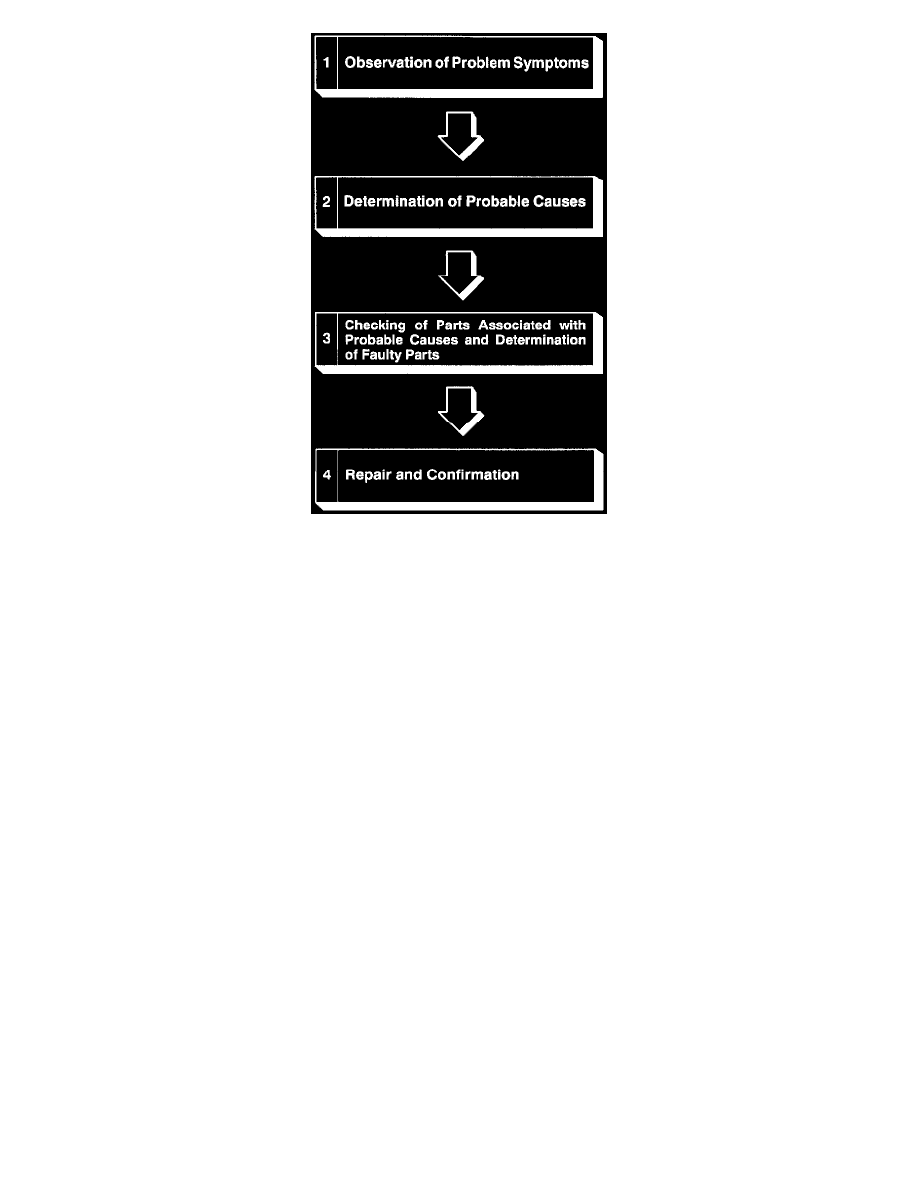Summit Wagon AWD L4-1795cc 1.8L SOHC (1994)

TROUBLESHOOTING STEPS
If an attempt is made to solve a problem without going through correct steps for troubleshooting, the problem symptoms could become more
complicated, resulting in failure to determine the causes correctly and making incorrect repairs. The four steps below should be followed in
troubleshooting.
1. Observation of Problem Symptoms problems.
Observe the symptom carefully. Check if there are also other problems.
2. Determination of Probable Causes
In determining the probable causes. it is necessary to check the wiring diagram to understand the circuit as a system. Knowledge of switches.
relays and other parts is necessary for accurate de termination. The causes of similar problems in the past must be taken into account.
3. Checking of Parts Associated with Probable Causes And Determining of Faulty Parts
Troubleshooting is carried out by making step by step checks until the true case is found. Always go through the procedures considering what
check is to be made where for the best results.
4. Repair and Confirmation
After the problems are corrected. be sure to check that the system operates correctly. Also check that new problems have not been caused by the
repair.
Information For Diagnosis
This manual contains the cable diagrams as well as the individual circuit drawings, operational explanations, and troubleshooting hints for each
component required to facilitate the task of troubleshooting. The information is compiled in the following manner:
1. Cable diagrams show the connector positions, etc., on the actual vehicle as well as the harness path.
2. Circuit drawings show the configuration of the circuit with all switches in their normal positions.
3. Operational explanations include circuit drawings of voltage flow when the switch is operated and how the component operates in reaction.
4. Troubleshooting hints include numerous examples of problems which might occur, traced backward in a common-sense manner to the origin of the
trouble. Problems whose origins may not be found in this manner are pursued through the various system circuits.
NOTE: Components of MFI, ETACS, ECS, etc. with ECU do not include (3) and (4) above.
Inspection
